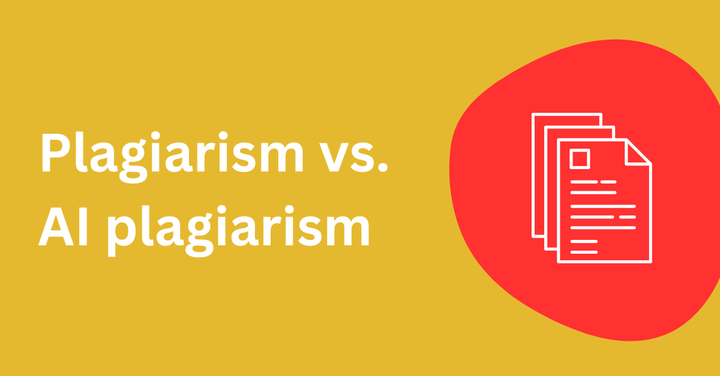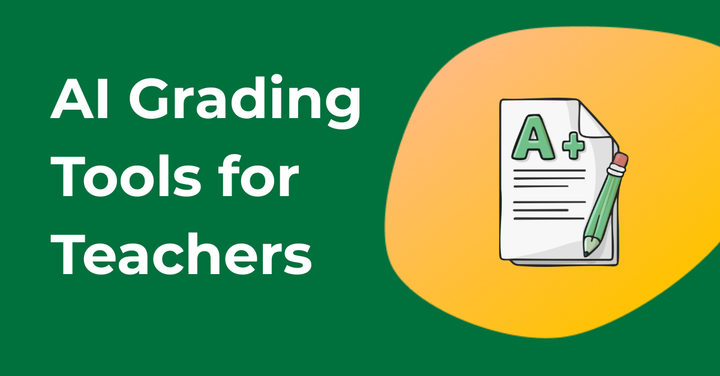How to Avoid the Trap of Self-Plagiarism
What is self-plagiarism, and why does it matter so much? Learn how to recognize it and how to steer clear of committing it.

When we think about plagiarism, we often think about copying someone else’s work – but what happens when the person you might be copying from… is yourself?
One of the lesser-known forms of plagiarism, self-plagiarism refers to exactly that. The issue goes beyond copying and pasting previous work you’ve done – it’s about the broader implications of what happens when you don’t properly cite that it’s your own previous work. In academic and professional settings, integrity is everything. Putting forward a piece of work without clear citations can be misleading and cause misunderstandings around originality, which can have far-reaching consequences.
Here, we’ll look at what self-plagiarism means, what it looks like in practice, and the ethical and legal implications.
Can you plagiarize yourself?
Plagiarism is becoming more of a complex issue as AI becomes more prevalent. Self-plagiarism occurs when you recycle your own previously published or submitted work without proper attribution. Using AI, you might inadvertently fall into this trap when rephrasing or mixing content you created earlier without indicating that it’s based on your past work.
This can lead to self-plagiarism if you don’t acknowledge the original source or provide a fresh perspective. While it may seem harmless (after all, it’s your own writing!) self-plagiarism is still problematic because, in educational or professional institutions, self-plagiarism can mislead people, as it suggests the work is entirely new when it actually reuses prior material.
The reason why this is so serious is because it creates a false impression. Re-using past work, even if it came from you, can be seen as a breach of trust or a failure to meet originality standards if it hasn’t been properly cited. In an academic environment, an assignment that appears new and unique should reflect original research, thought, or analysis. When it doesn’t, this can break the trust between the student and the institution.
How does self-plagiarism relate to AI?
Since AI tools can now be used for generating or summarizing content, this can make the lines between what is genuinely new and what is reused material blurrier than ever. If you rely on AI to create variations of your previous work, there’s more of a risk of unintentional self-plagiarism, especially if the AI-generated content hasn’t been declared as such. Ideally, your work is meant to show fresh insights, instead of repackaging the same ideas.
AI tools can increase the temptation to rephrase and recombine sentences to appear different. Without attribution, this can sneak into self-plagiarism territory. If AI is involved, it’s good practice to make it clear where the inspiration comes from (even if it’s your past self) in the name of transparency.
What self-plagiarism looks like
So what does this look like in practice? In academic writing, reusing parts of another one of your pieces of work, or including previous findings in new research, without citing them can be self-plagiarism. Here are two examples:
Example of self-plagiarism
In a 2022 essay on the Civil Rights Movement, imagine you wrote:
“The 1963 March on Washington was a defining moment for America, as Dr. King’s 'I Have a Dream' speech shared an undercurrent of the national urge towards equality and justice.”
Then, in an essay a year later in 2023, on famous speeches, you wrote:
“The 1963 March on Washington was a defining moment for America, as Dr. King’s 'I Have a Dream' speech reflected the national urge towards equality and justice.” You didn’t reference your earlier work.
This is self-plagiarism because you recycled your previous writing without acknowledging that it had been used in an earlier assignment. Teachers could see this as an attempt to submit old work as if it were original and unique.
Example of properly cited work
Fixing the above issue is simple – and the key is to properly cite your sources (even if, in this case, it’s your previous self).
In a 2022 essay on the Civil Rights Movement, you write:
“The 1963 March on Washington was a defining moment for America, as Dr. King’s 'I Have a Dream' speech shared an undercurrent of the national urge towards equality and justice.”
But, in an essay a year later in 2023, on famous speeches – to avoid self-plagiarism, you need to have written:
“As I discussed in my Civil Rights Movement essay ([YOUR SURNAME], 2022), the 1963 March on Washington was a defining moment for America. Dr. King’s 'I Have a Dream' speech reflected the national push towards equality and justice."
By referencing your previous work, you’re showing that this analysis was part of an earlier assignment.
Why self-plagiarism is dangerous
The citation itself matters, but what matters even more is what it demonstrates in terms of your understanding of the process of creating original intellectual property and upholding academic integrity. The key thing that attribution shows it that you’re committed to honesty and transparency in your work.
When creating work, the people who read your work are trusting that you came up with it yourself. By referencing the origins of the work properly, you’re upholding their trust by acknowledging the reuse of ideas or language, making it clear that you’re building on prior research rather than passing it off as new.
Failing to reference the work is misleading as it arguably misrepresents your effort and understanding of the subject matter. Essentially, it’s about displaying honesty. The people reading your work expect you to show that, which includes submitting original work. Self-plagiarism undermines this expectation.
Potential consequences of self-plagiarism
Depending on how severe the self-plagiarism is, the repercussions can go from a failing grade on the assignment to more serious disciplinary actions. You might be placed on academic probation, which can have far-ranging consequences for the rest of your learning journey – or, in severe cases, you could be suspended or expelled.
Loss of reputation
Fundamentally, it’s the loss of reputation that can be the longest-lasting. This is what can jeopardize future opportunities like scholarships, and can have a permanent mark on your academic record (which in turn can affect your future applications to college or further training). The impact of acting without integrity can extend to your professional life as well, where trust is essential for maintaining credibility and building professional relationships.
Navigating self-plagiarism and AI responsibly
When it comes to avoiding plagiarism, the golden rule is to always cite your sources. As an extra precaution, you can also use a plagiarism checker to help tell you whether your text contains duplicate content. Taking these measures shows that you are respecting the process that those reading your work expect you to follow.
Using AI responsibly means understanding the darker side of its possibilities, which include its limitations and potential risks: in this case, the risk of recycled content. Making attributions clearly is one of the best habits you can get into, as it is not just about the attribution itself but what it represents regarding the value you place on originality and integrity.


